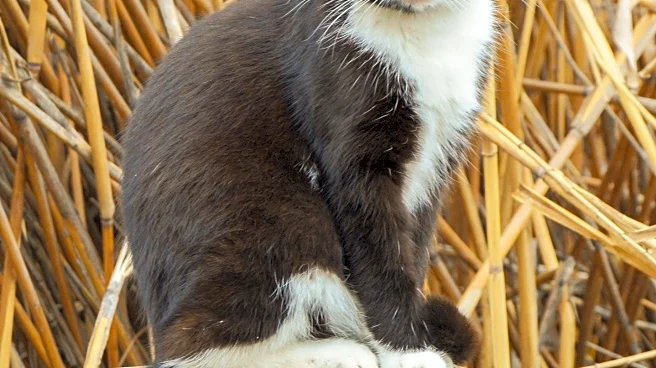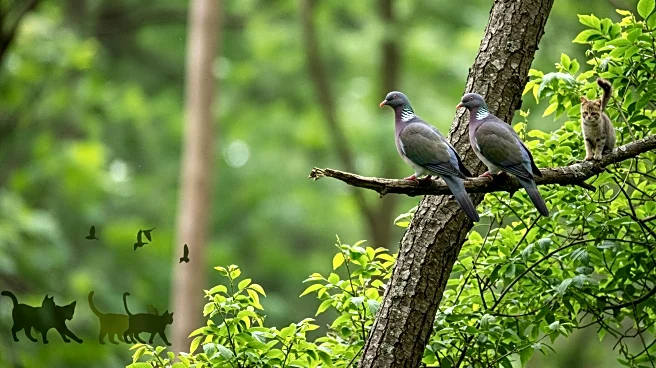What is the story about?
What's Happening?
The red-headed wood pigeon, a critically endangered species endemic to Japan's Ogasawara Islands, has shown a remarkable recovery after conservationists removed feral cats from the islands. These cats, introduced to the islands, had been preying on the pigeons, causing their population to drop to fewer than 80 individuals in the early 2000s. Intensive trapping efforts between 2010 and 2013 reduced the feral cat population significantly, leading to a rebound in pigeon numbers. Researchers from Kyoto University have studied this recovery, noting the pigeon's resilience despite the small population size, which typically leads to inbreeding and genetic mutations.
Why It's Important?
The recovery of the red-headed wood pigeon is significant as it challenges the common belief that small populations are doomed to suffer from harmful genetic mutations due to inbreeding. The study suggests that the pigeon's long-term survival as a small, isolated population may have purged harmful mutations, providing genetic resilience. This finding could influence conservation strategies for other endangered species, highlighting the potential for genetic adaptation in small populations. The pigeon's recovery also underscores the importance of predator management in conservation efforts, offering hope for other species facing similar threats.
What's Next?
Despite the positive recovery, the red-headed wood pigeon's population remains below historic levels, and there is a risk of losing genetic diversity over time. Conservationists aim to restore the population to its former numbers to ensure long-term survival and adaptability to environmental changes. Continued monitoring and management of the feral cat population will be crucial, along with efforts to maintain and enhance the pigeon's habitat. Researchers may also explore further genetic studies to understand the mechanisms behind the pigeon's resilience and apply these insights to other conservation challenges.
Beyond the Headlines
The study of the red-headed wood pigeon offers insights into the complex dynamics of genetic resilience and adaptation in small populations. It raises ethical considerations about human intervention in natural ecosystems, particularly the removal of invasive species. The pigeon's recovery story also highlights the cultural significance of preserving endemic species, which are integral to the biodiversity and ecological heritage of their native regions. Long-term conservation success will depend on balancing ecological interventions with respect for natural evolutionary processes.
AI Generated Content
Do you find this article useful?













